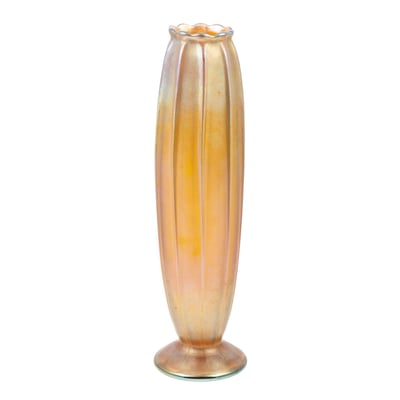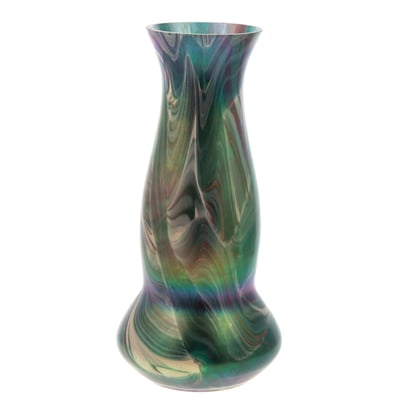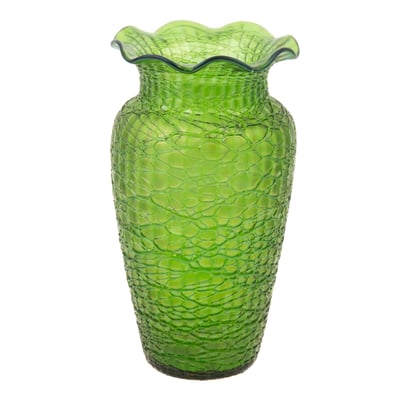Tiffany and the Art Glass Revolution
Art Glass is defined as glass that is manufactured for purely decorative and aesthetic reasons without any consideration to the functionality. It burst onto the scene in the late 19th century and was revolutionized by Louis Comfort Tiffany and his patented method of Favrile iridescent glass. The glass is easily recognized by its gaudy colors created by the unique mixtures of mineral salts to the glass blowing process. In American high society, the possession of these works of glass became a sign of status and import. These glass pieces existed to be looked at and admired. Patrons clamored to buy these prestigious pieces at high end jewelry stores and galleries throughout New York City.

Photo credit-Joaquin Sorolla public domain, via Wikimedia Commons
Alex Cooper is presenting a large selection of incredible Art Glass pieces, mostly Tiffany, in our April 1st sale. Most of the works come from the Estate of William Tudor, a renowned Baltimore Collector. There are many lovely pieces to choose from, but if you are looking to purchase just one, lot 1456 is the one you should buy. It is large, colorful and presents very well.

Lot 1456, Tiffany Favrile Glass Vase
Following the frenzy that surrounded Tiffany Art Glass, all the European glass manufacturers followed suit. Steuben created the competitor, Aurene, their version of iridescent glass. Bohemian and Austrian glass makers also brought their own interpretation of the genre to market. Lot 1459 is lovely example of Austrian Iridescent Art Glass attributed to Josef Rindskopf.

Lot 1459, Austrian Iridescent Art Glass Vase
Lot 1458 is a gorgeous piece of Bohemian glass in a study shade of green. While not functional, per se, you can certainly put flowers in it if so desired.

Lot 1458, Bohemian String Glass Vase
Art Glass is finding itself popular now due to the resurgence of the “Steam Punk Era” that characterized the Victorian/Edwardian Industrial Era. The pieces were manufactured years ago and their age makes the condition the MOST important issue impacting their value. Condition, condition, condition-a little chip is a very big deal. Pricing varies due to size, rarity, and condition. Auction sales are showing that rare pieces are bringing top money with average pieces bringing average money.
Since condition is the most important aspect of Art Glass, the proper storage of the pieces is key. Any collector would want to make sure that they are safely stored either in a glass front cabinet or case, the middle of a table or high on a shelf. The number of times I have heard of the family cat knocking over the Tiffany vase! You will also want to avoid drastic changes in temperature to keep the pieces from cracking.
I hope you enjoy the Art Glass collection and find something to add to (or create) your own collection. For more information on the Glass or the April first auction, please visit bid.alexcooper.com or send an email to me, Jim Plumer, at jplumer@alexcooper.com.
Jim Plumer
Director of Decorative Arts
